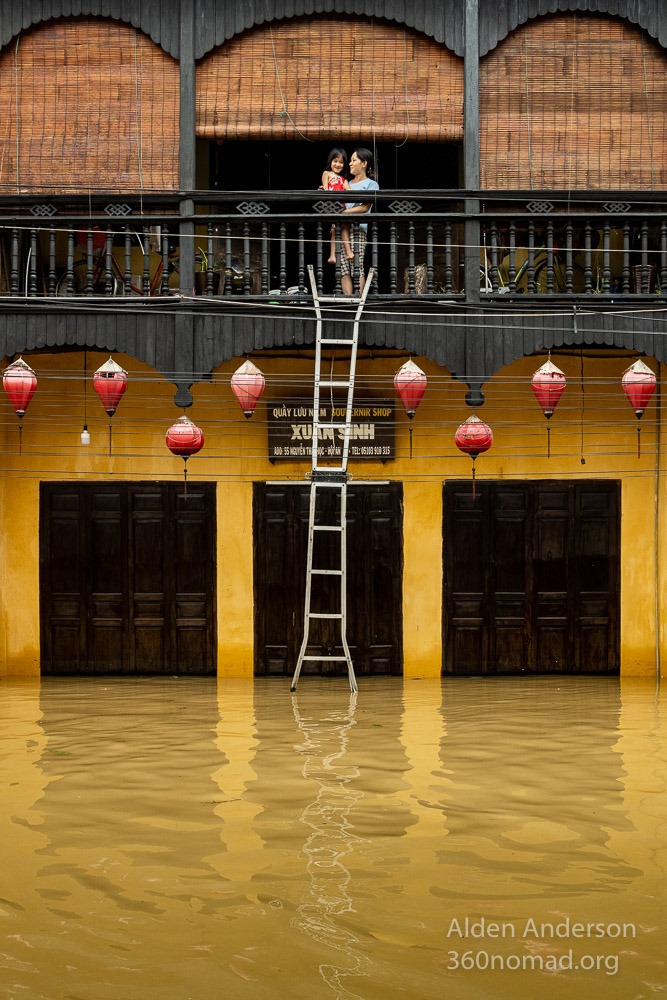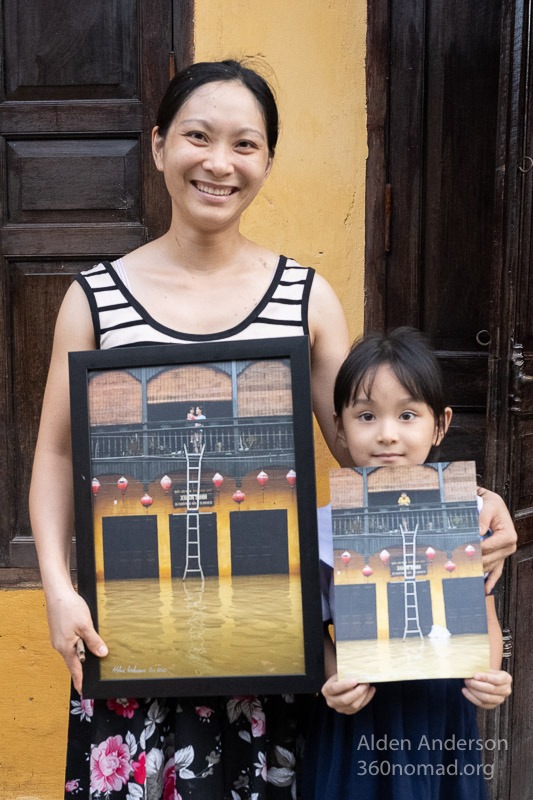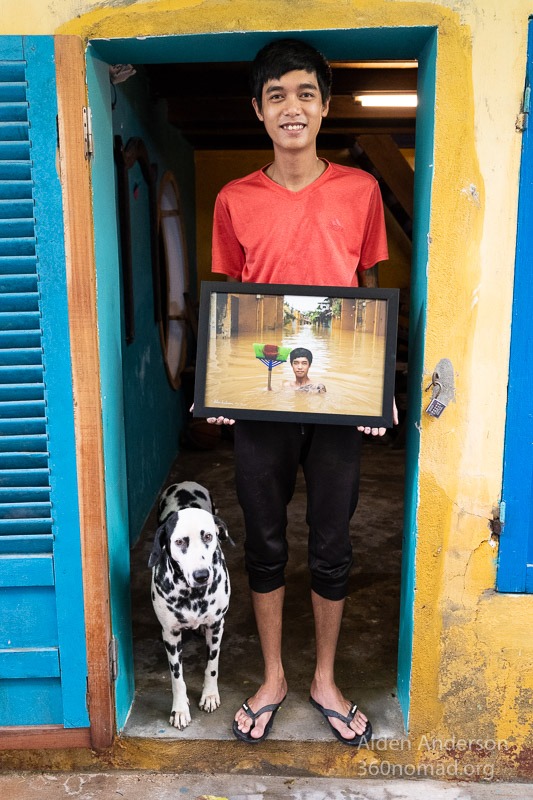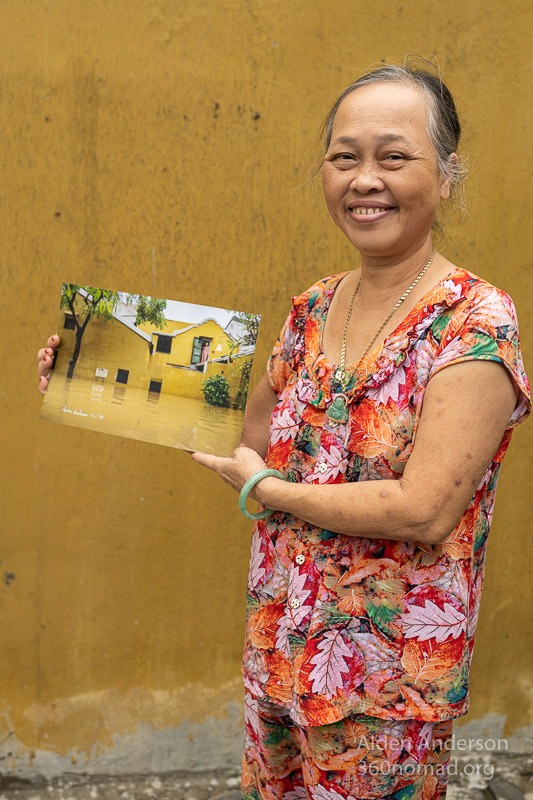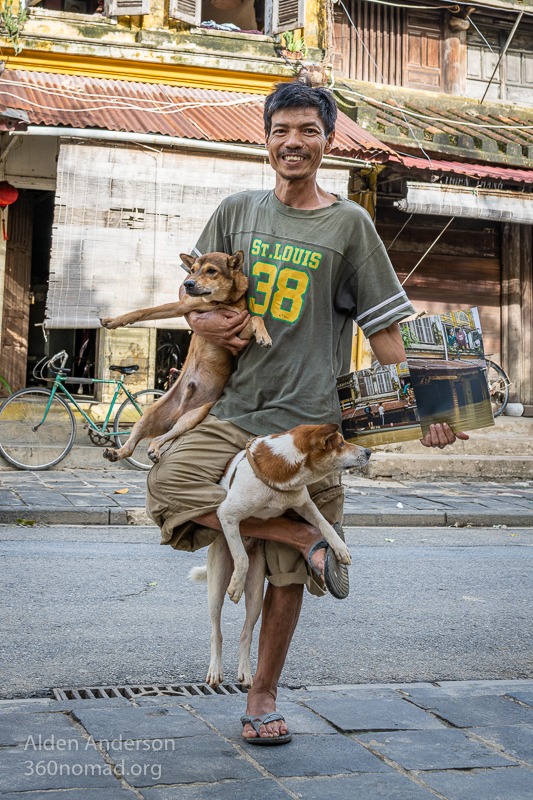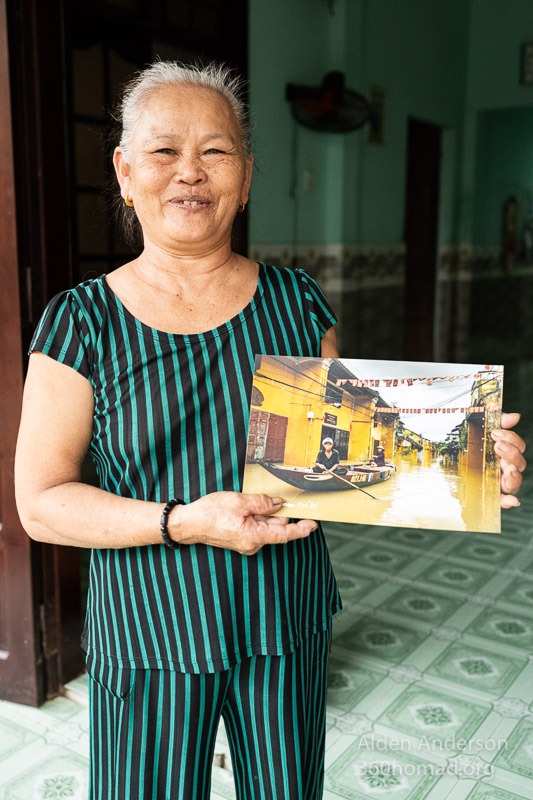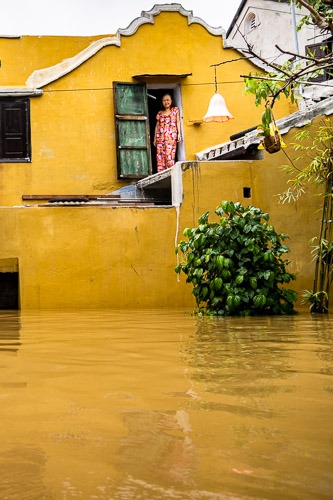Hoi An Underwater
Local Stories from the Flood in Hoi An
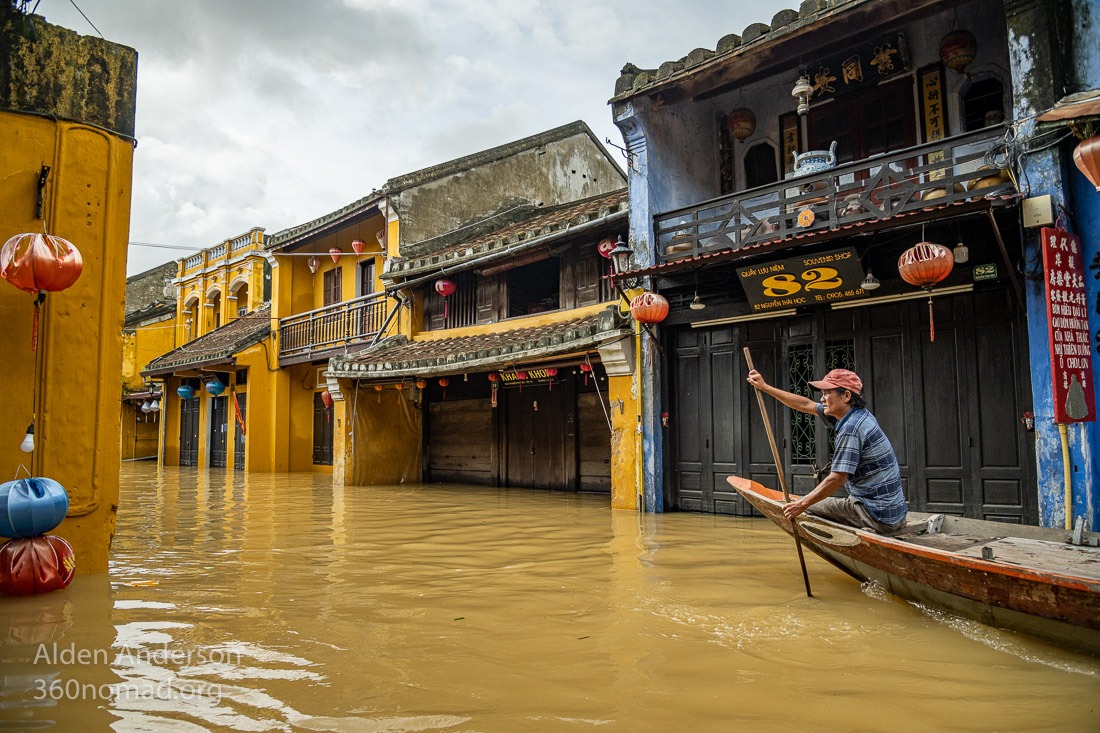
Hoi An Floods — October 2020
The water reached my shoulders and when I stepped into the street I suddenly felt the current trying to pull me into its invisible grasp. An all too familiar feeling that set off an alarm inside my head “Be careful! It looks like nothing, but don’t get caught in it.”
When I first visited Hoi An more than 2 years ago almost every old house I visited had marks of the flood levels from years prior. The flood itself is actually an overflow of the Thu Bon River along which Hoi An is built. This became abundantly clear when I stepped into the street and felt the current of the river nearly knock me off my feet.
Hoi An Ancient Town sprung up around the banks of the Thu Bon River in Central Vietnam and for hundreds of years was a nexus for shipping routes around the world. In the 20th Century ostensibly due to the river filing with silt (among other factors), the shipping hub of Hoi An was gradually replaced by Da Nang and other ports that were more accessible to large sea-faring vessels. Hoi An was left, largely undisturbed by modern development and in 1999 was designated a UNESCO World Heritage site.
These days in Hoi An there is a dam upriver and the locals typically get a warning from the authorities before it’s released. The flood warning plus the dam and preparation means the flood in Hoi An is an inconvenience but isn’t typically life-threatening. The locals are quite accustomed to the streets of Hoi An turning into a temporary extension of the Thu Bon River.
Click on the blue text to go to a page with more of the story.
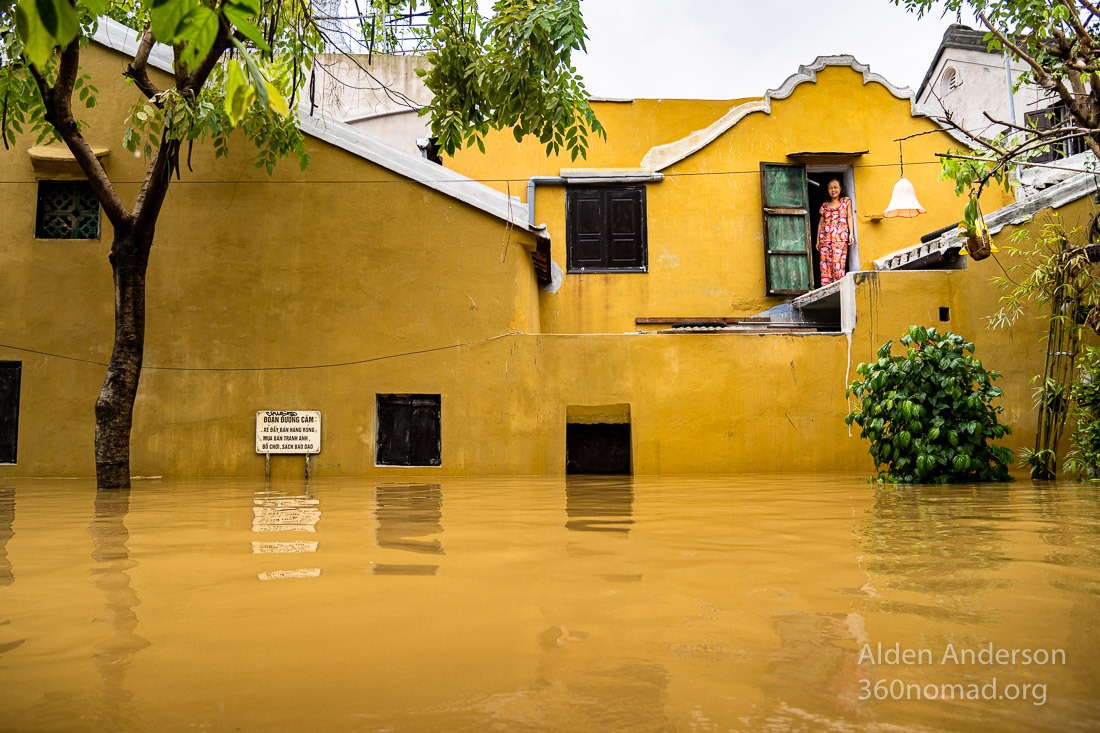
There hadn’t really been any flooding since I first visited Hoi An in May 2018. After 5 days of heavy rain in October 2020, I decided to visit the Old Town and see how the locals dealt with the flood.
The first person I saw was Sa, standing in the door to the attic of her house. The flood escape hatch as it were.
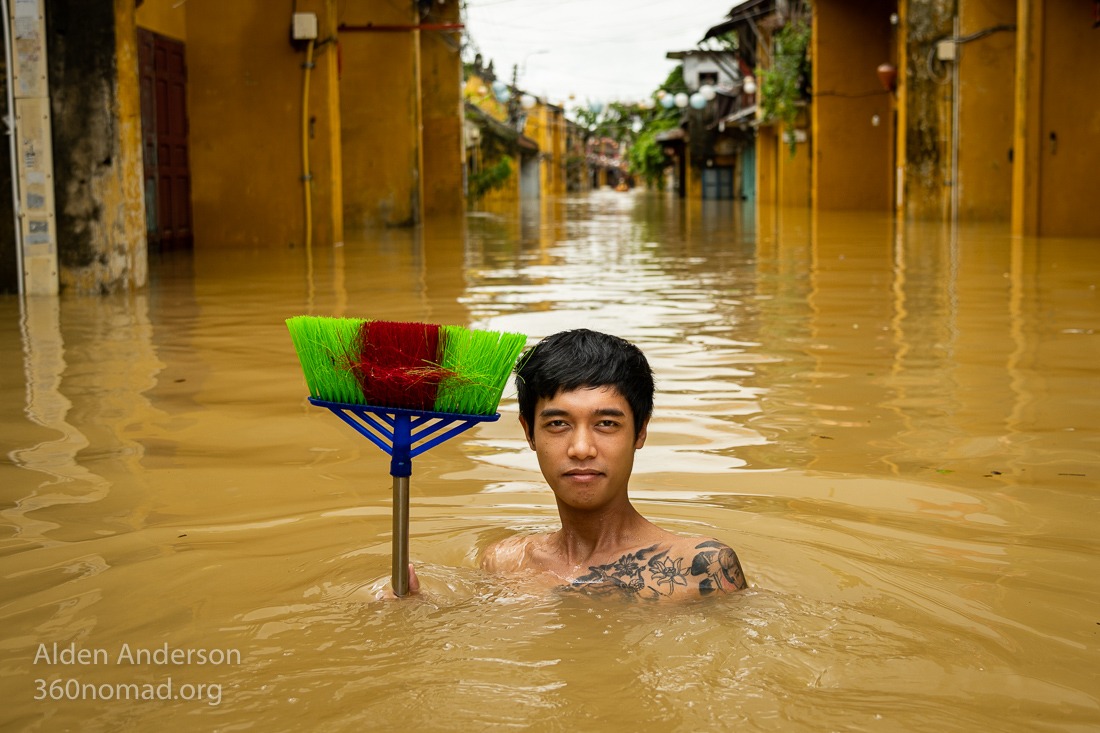
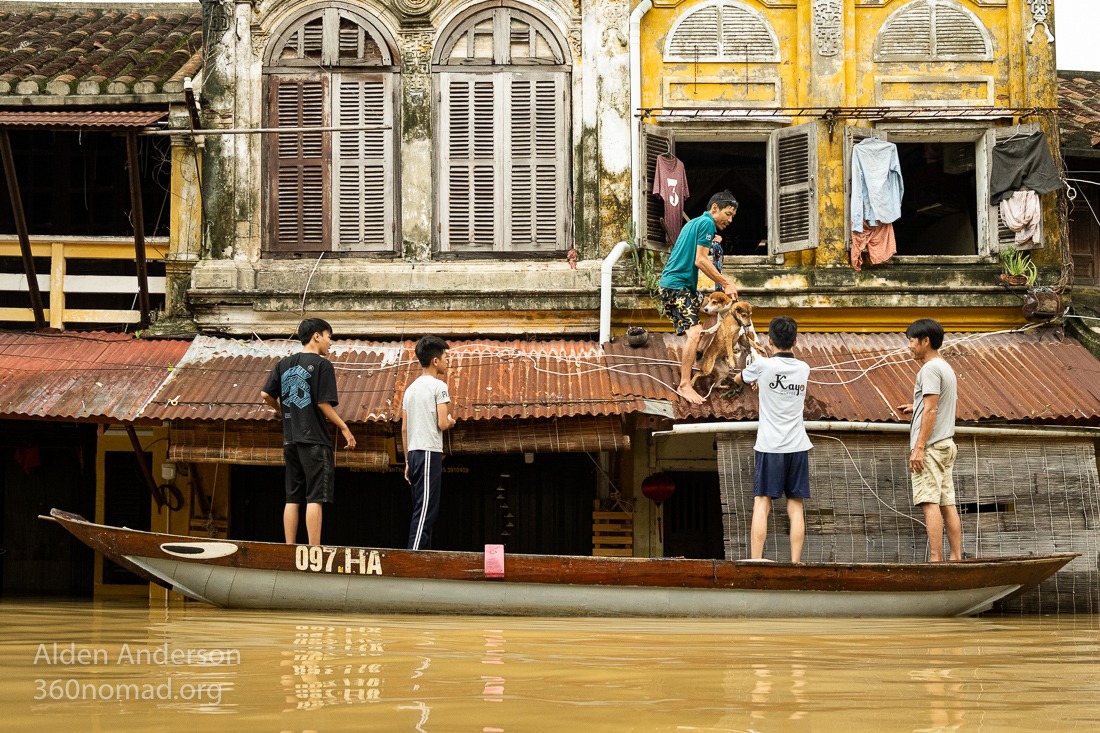
“It was in these stories that I learned more about the flood, how the locals respond to it, and little details about the lives of the people living in Hoi An.”
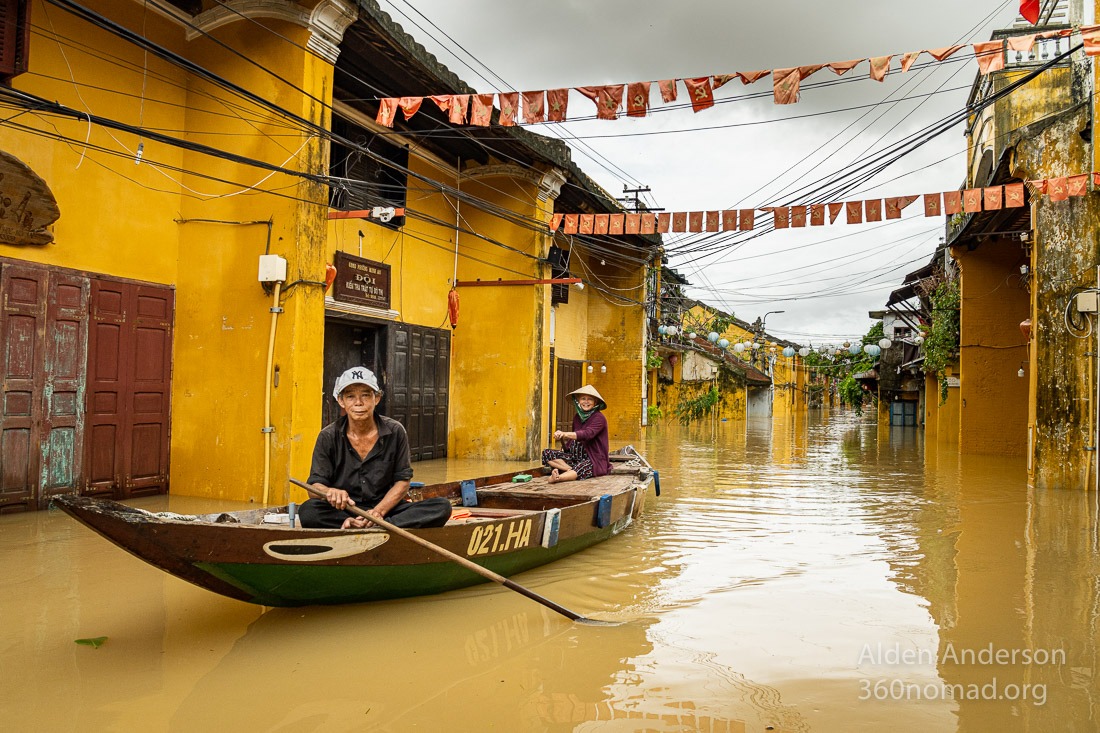
There was a kind of beauty in the old town, ochre walls reflected in the turgid water, brown from the silt of the fields and mountains above. The revving and honking of motorcycles replaced by boats and the occasional paddleboard.
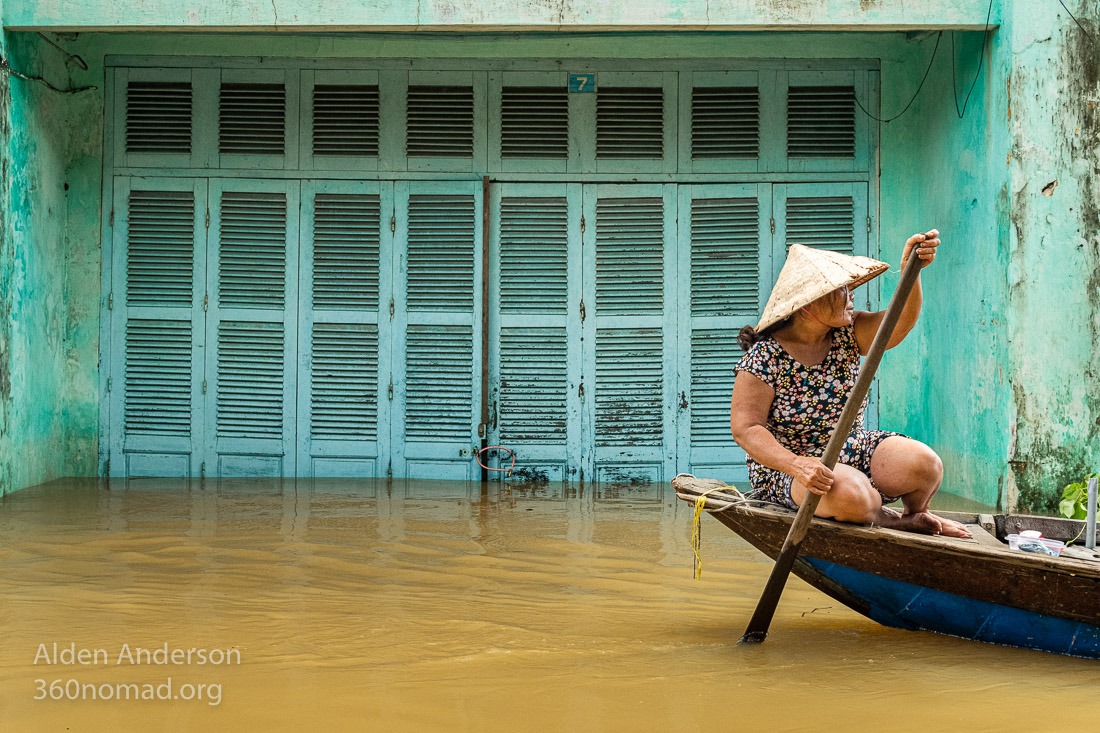
During the flood local boat operators offer rides to people wanting to explore Hoi An while its flooded.
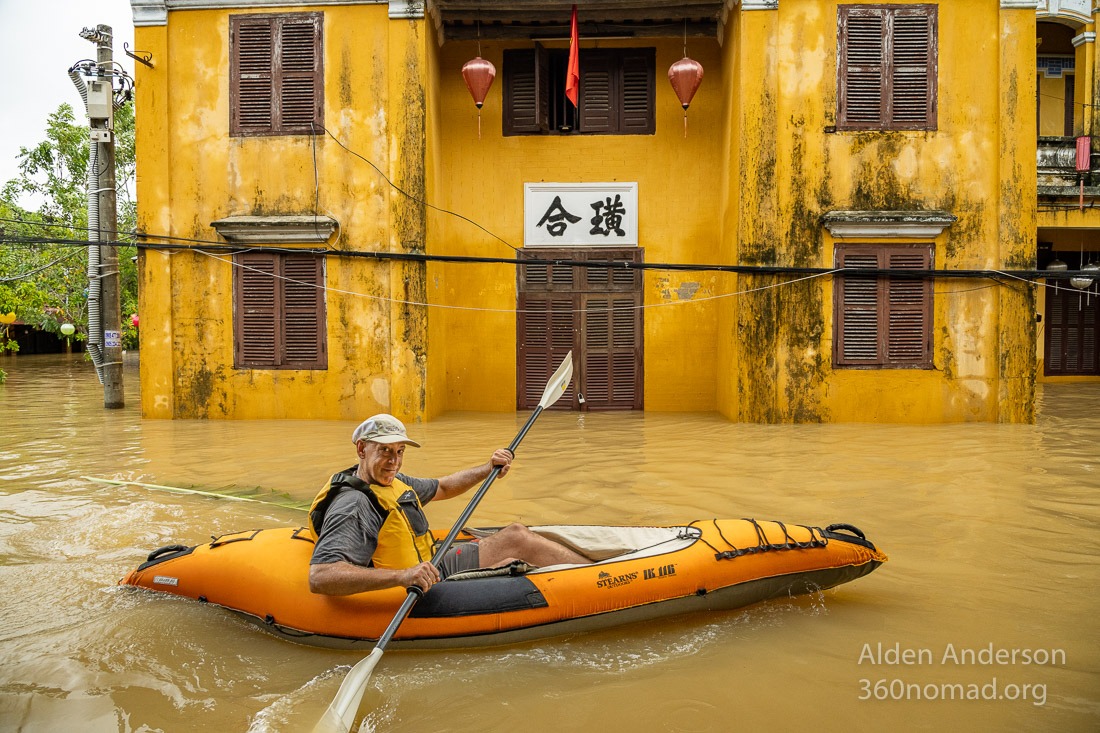
A “local foreigner” paddles through Hoi An on his inflatable kayak.
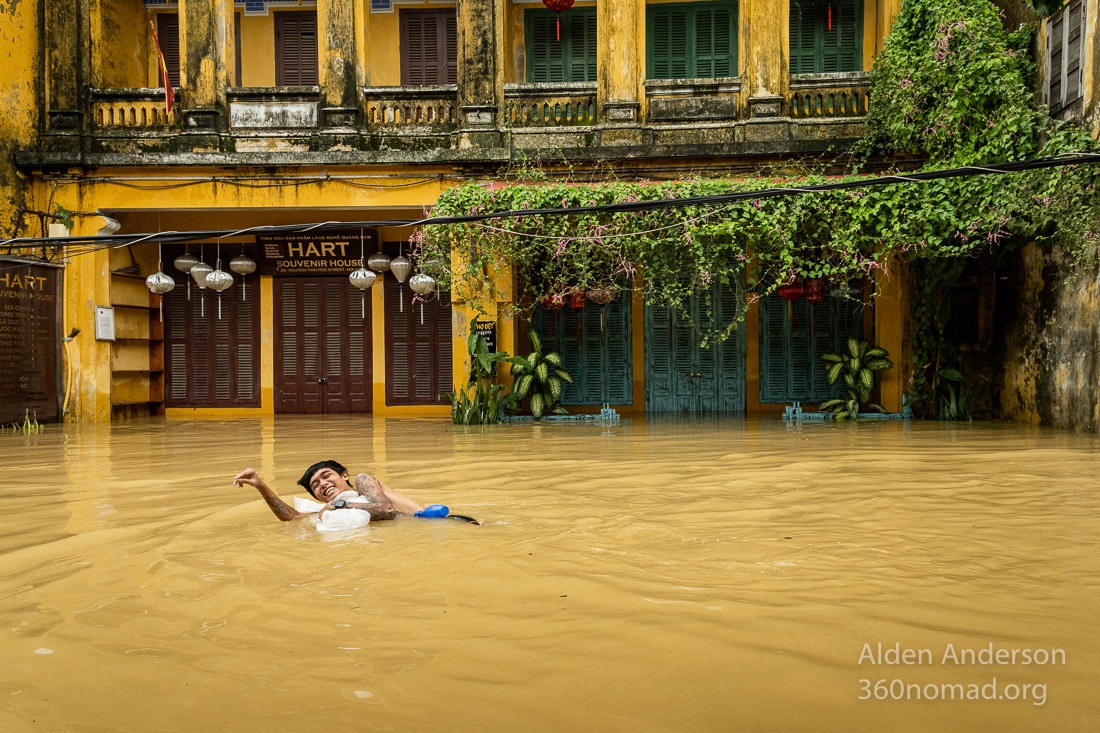
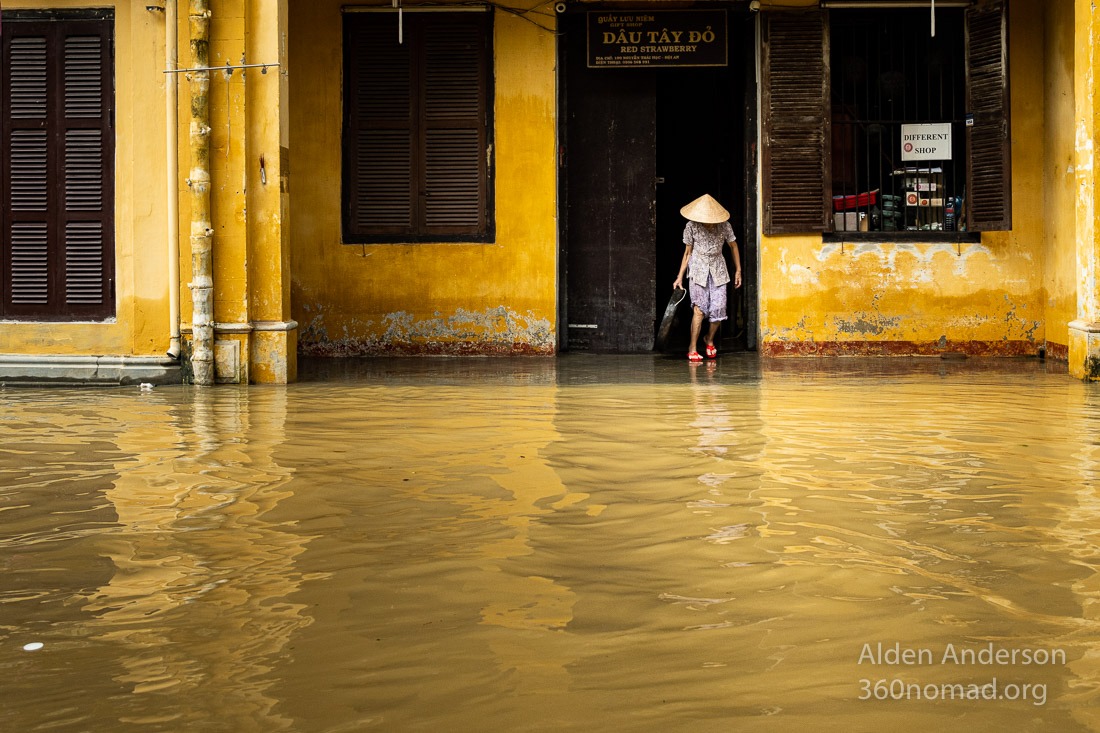
Du, 72, washes the gongs from her house in the flooded streets.
By the early afternoon, water levels had receded considerably and the street where the water was up to my neck was now just over waist high, making movement easier and safer.
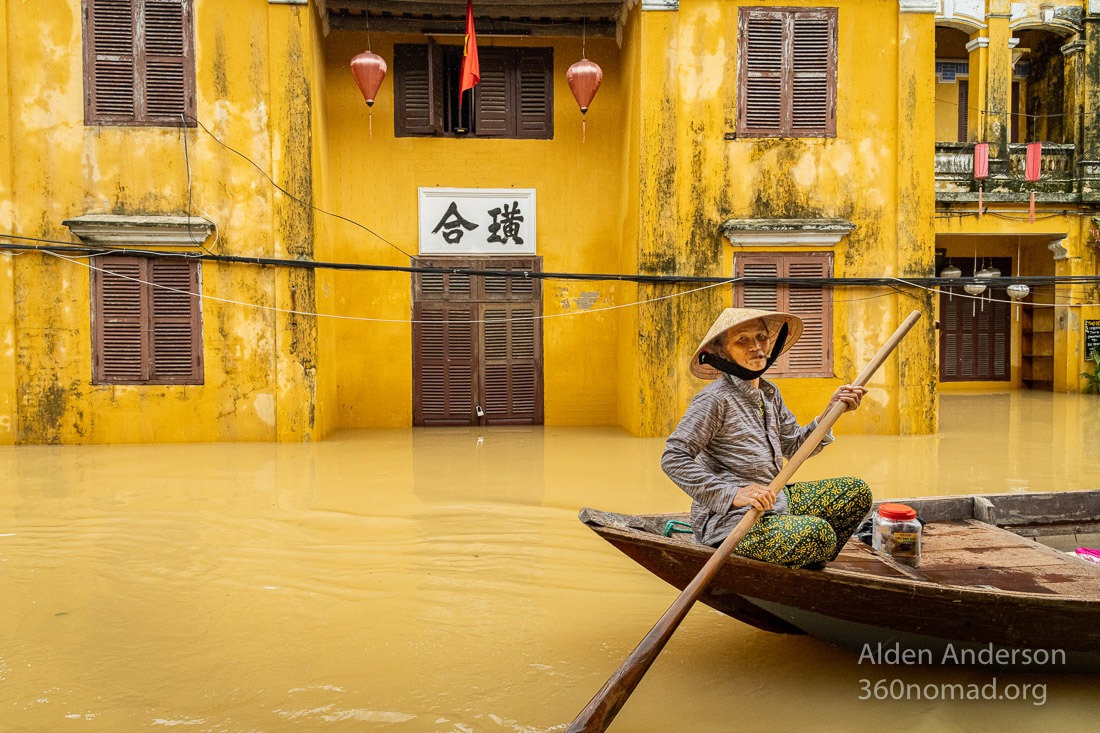
“Normally, I just stay home to rest. I was riding the boat with my grandkid on that day.” Tí, 70, looks for clients around Hoi An ancient town.
Stories from the Flood in Hoi An
Perhaps the more interesting, but certainly the most rewarding part came two days later. As crews scraped the mud from the streets my partner Trinh and I drove around Hoi An to deliver photos and learn the stories from the people I’d encountered during the flood.
It was in these stories that I learned more about the flood, how the locals respond to it, and little details about the lives of the people living in Hoi An. Stories like why Tuân was hauling his dogs back through the second-story window of his house as well as his dog’s names and the meaning behind them. Or Sa and why her house has a strange door in the attic. Bình and what he was doing holding a broom in the middle of the flooded street, why he lives in Hoi An, and how he deals with the flood.
It was in these small details that brought me a greater understanding of Hoi An and a deeper and more personal meaning to the photographs of the people.

